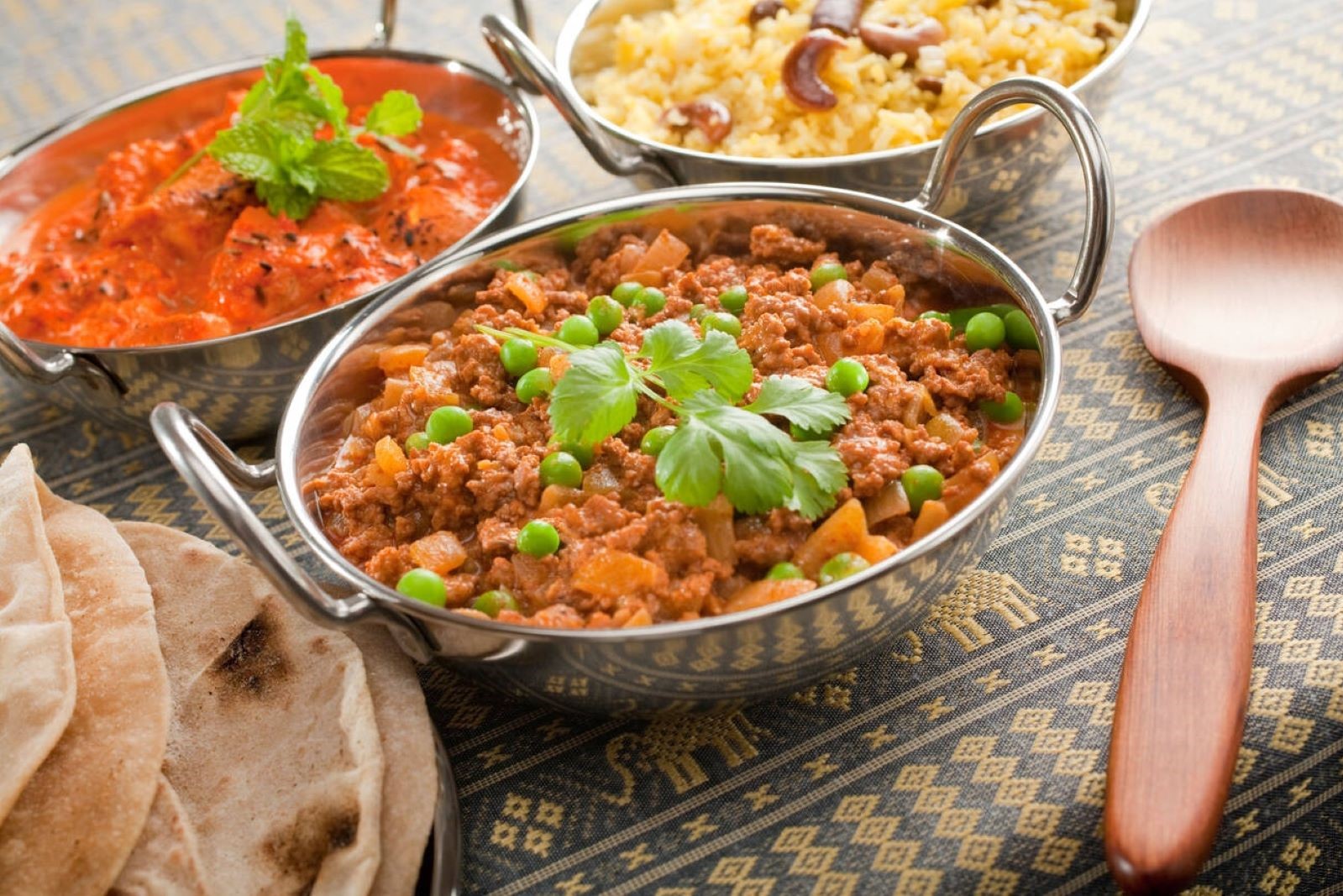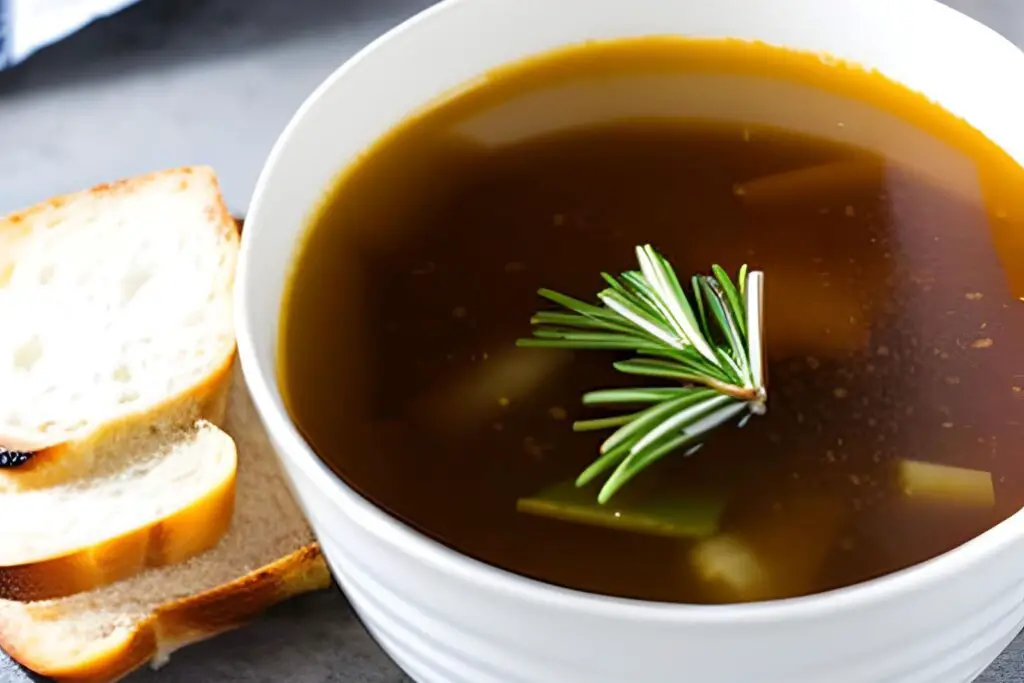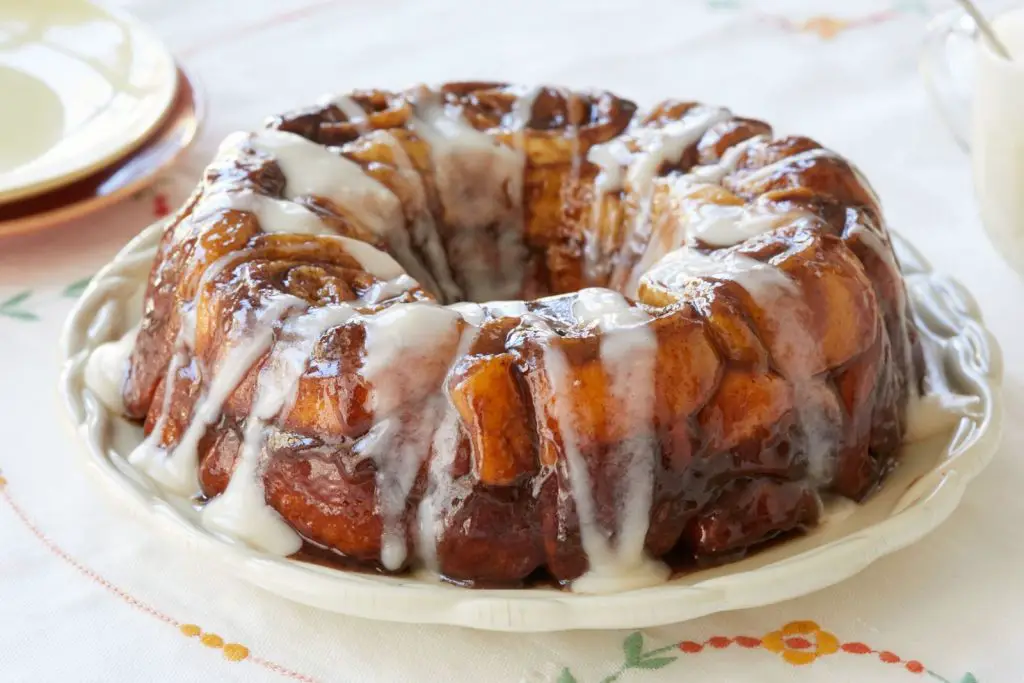
Indian curries, with their aromatic spices and rich flavors, are a culinary delight that has captivated food lovers around the world. Whether it’s the creamy goodness of butter chicken, the fiery heat of vindaloo, or the comforting warmth of a vegetable korma, Indian curries offer a diverse range of tastes and textures that satisfy the palate. If you enjoy making and savoring Indian curries, freezing can be a game-changer, allowing you to conveniently store and enjoy these delectable dishes at your convenience. Freezing Indian curries not only helps in meal planning and preserving their authentic flavors but also allows you to have a quick and flavorful meal on busy days. In this guide, we will explore the best practices for freezing Indian curries, including proper storage containers, tips for maintaining taste and texture, and guidelines for thawing and reheating. Join us as we delve into the world of freezing Indian curries and unlock the secret to having a taste of India at your fingertips, whenever the craving strikes.
Here are the simple steps to freeze indian curries:
Step 1: Prepare the Indian Curry
To begin the process of freezing Indian curries, you need to prepare the curry itself. This step involves cooking the Indian curry according to your preferred recipe and ensuring that all the ingredients are properly cooked and the flavors are well-developed. Here’s a breakdown of this step:
- Choose your recipe: Select a recipe for the Indian curry you want to freeze. It could be a vegetable curry, chicken curry, lentil curry, or any other type of curry that you enjoy.
- Gather the ingredients: Collect all the necessary ingredients mentioned in the recipe. This typically includes vegetables, meat or legumes, spices, herbs, and any other flavor-enhancing components.
- Follow the recipe instructions: Carefully follow the instructions provided in the recipe to cook the Indian curry. This may involve chopping and sautéing vegetables, marinating meat, or simmering the ingredients in a flavorful sauce.
- Ensure thorough cooking: It is essential to ensure that all the ingredients are properly cooked. This not only enhances the flavors but also helps in maintaining the quality of the curry during the freezing process.
- Adjust seasonings: Taste the curry as it cooks and adjust the seasonings, such as salt, pepper, and spices, according to your preference. Remember that flavors can intensify slightly after freezing, so it’s better to slightly under-season the curry at this stage.
- Allow the curry to cool: Once the curry is cooked, remove it from the heat and let it cool down completely. This step is crucial before proceeding with the freezing process, as it prevents condensation and moisture build-up during freezing.
By properly preparing the Indian curry, you ensure that it is cooked to perfection, with all the flavors and ingredients properly incorporated. This sets the foundation for freezing the curry and preserving its taste and quality. Following this step will help you enjoy a flavorful and satisfying Indian curry even when it’s not freshly made.
Step 2: Allow the Curry to Cool
After cooking the Indian curry, it’s important to allow it to cool down completely before moving forward with the freezing process. This step is crucial to prevent condensation and ice crystals from forming, which can affect the texture and quality of the curry when it’s frozen. Here’s why cooling the curry is important and how to do it:
- Temperature control: Cooling the curry helps to control the temperature and reduce it to a safe level before freezing. This is important because if the curry is still hot when placed in the freezer, it can raise the temperature inside the freezer and potentially spoil other frozen foods.
- Condensation prevention: Allowing the curry to cool prevents condensation from occurring when it’s placed in the freezer. If hot or warm curry is frozen directly, the steam generated can turn into ice crystals on the surface of the curry or within the container. This can result in freezer burn and affect the quality of the curry.
- Texture preservation: Rapid temperature changes can affect the texture of the curry. Cooling it down slowly helps to preserve the desired consistency of the curry, whether it’s thick and creamy or saucy and flavorful.
Here’s how to cool the Indian curry properly:
- Remove from heat: Once the curry is fully cooked, remove it from the heat source, such as the stovetop or oven.
- Transfer to a shallow container: Transfer the curry into a shallow, wide container. Using a shallow container helps in cooling the curry more quickly and evenly.
- Stir occasionally: Stir the curry occasionally during the cooling process. This helps to distribute the heat evenly and speeds up the cooling process.
- Room temperature cooling: Place the container with the curry on a heat-resistant surface at room temperature. Avoid placing it directly in the refrigerator or freezer while it’s still hot.
- Cover the container: Cover the container with a lid or plastic wrap to protect the curry from contaminants as it cools down.
- Allow complete cooling: Let the curry cool down completely at room temperature. This may take anywhere from 1 to 2 hours, depending on the quantity and thickness of the curry.
By allowing the Indian curry to cool down completely, you ensure that it reaches a safe temperature for freezing. This helps to maintain the quality, flavor, and texture of the curry during the freezing process, resulting in a delicious and enjoyable meal when it’s reheated later on.
Step 3: Portion the Curry
Once the Indian curry has cooled down, the next step is to portion it into individual serving sizes. This step is important as it allows you to freeze the curry in convenient portions, making it easier to thaw and reheat only the amount you need for each meal. Here’s why portioning the curry is beneficial and how to do it:
- Easy meal planning: Portioning the curry allows for better meal planning and portion control. By dividing it into individual servings, you can freeze exactly the amount you need for each meal, reducing the chances of wastage.
- Convenient reheating: Freezing the curry in individual portions makes it easier to thaw and reheat only the desired quantity. Whether you’re cooking for one or a whole family, portioning ensures that you can easily take out the required servings without having to defrost the entire batch.
- Avoid repeated thawing: By portioning the curry, you can avoid the need to repeatedly thaw and refreeze the entire batch. This helps to maintain the quality of the curry and prevents potential food safety concerns.
Here’s how to portion the Indian curry effectively:
- Choose appropriate containers: Select freezer-safe containers or airtight freezer bags for portioning the curry. Ensure they are of good quality and have a capacity suitable for individual servings.
- Determine portion sizes: Decide on the desired portion sizes based on your serving preferences. It can be individual single-serve portions or portions suitable for sharing, depending on your needs.
- Ladle or scoop portions: Use a ladle or spoon to portion the curry into the chosen containers. Fill each container with the desired amount of curry, leaving some space at the top to allow for expansion during freezing.
- Seal the containers: Seal the containers tightly to prevent air exposure and potential freezer burn. Ensure that the lids are securely closed or the freezer bags are properly sealed.
By portioning the Indian curry before freezing, you can enjoy the convenience of having pre-measured servings ready to thaw and reheat. It eliminates the need to defrost more curry than necessary, reducing food waste and ensuring that you can enjoy the flavors and textures of the curry at its best.
Step 4: Choose Freezer-Safe Containers
When freezing Indian curry, it’s crucial to use the right containers to ensure optimal preservation and avoid any potential leaks or contamination. Selecting freezer-safe containers or airtight freezer bags is essential in maintaining the quality and integrity of the curry during the freezing process. Here’s why choosing the right containers is important and how to do it effectively:
- Prevent freezer burn: Freezer-safe containers are designed to protect the food from freezer burn, which can occur when moisture evaporates from the food and forms ice crystals. Good-quality containers help to maintain a tight seal, preventing air and moisture from entering and affecting the texture and taste of the curry.
- Avoid leaks and spills: Using containers that are specifically designed for freezing prevents leaks and spills in the freezer. Leakage can lead to cross-contamination and result in a messy and unhygienic freezer environment.
- Preserve flavors and aromas: Airtight containers or freezer bags help to retain the flavors and aromas of the curry. They prevent the absorption of odors from other foods in the freezer and keep the curry’s taste intact.
Here’s how to choose freezer-safe containers for packaging the Indian curry:
- Container material: Opt for containers made from materials suitable for freezing, such as food-grade plastic or glass. These materials are resistant to low temperatures and maintain their integrity without becoming brittle.
- Airtight seal: Ensure that the containers have a secure and tight-fitting lid or closure mechanism. This helps in maintaining the curry’s freshness and prevents air exposure, which can lead to freezer burn.
- Leak-proof design: Choose containers that are leak-proof and have a reliable seal to prevent any liquids or sauces from spilling out. This is especially important when freezing curries with sauces or gravies.
- Suitable size: Select containers that are appropriately sized for the portioned curry. It’s best to choose containers that leave some headspace to accommodate expansion during freezing.
- Freezer bags as an alternative: If you prefer using freezer bags, opt for high-quality, thick freezer bags specifically designed for freezing. Look for bags with a reliable zip-lock seal to ensure airtight closure.
By choosing freezer-safe containers or airtight freezer bags, you can ensure the curry is properly sealed and protected during freezing. This helps to preserve its flavors, prevent freezer burn, and maintain a clean and organized freezer space.
Step 5: Fill the Containers
Once you have selected the appropriate freezer-safe containers, it’s time to carefully fill them with the Indian curry. This step requires attention to ensure that the curry is portioned and packed correctly, leaving enough space for expansion during freezing. Here’s why filling the containers properly is important and how to do it effectively:
- Allow for expansion: Liquids, including the curry, tend to expand when frozen. Leaving some space at the top of the containers allows the curry to expand without causing the containers to burst or leak. It also prevents the curry from coming into contact with the lid, which can lead to freezer burn.
- Avoid spills and messes: Overfilling the containers can result in spills and messes when the curry expands during freezing. Properly filling the containers helps maintain a clean and organized freezer environment, preventing cross-contamination between different foods.
- Portion control: Filling the containers with the appropriate amount of curry ensures portion control. It allows you to freeze individual servings or the desired quantity for each meal, making it easier to thaw and reheat only what you need.
Here’s how to fill the containers with the Indian curry effectively:
- Leave headspace: Before ladling the curry into the containers, ensure they are clean and dry. Leave approximately ½ inch (1.3 cm) of headspace at the top of each container. This headspace will accommodate the expansion of the curry as it freezes.
- Ladle the curry: Use a ladle or spoon to transfer the curry into the containers. Fill each container with the desired amount of curry, ensuring you evenly distribute the ingredients and sauce.
- Do not overfill: Avoid overfilling the containers. Leave enough space at the top to prevent spillage or leakage during freezing. It’s better to slightly underfill the containers than to overfill them.
- Level the surface: After filling each container, use a spoon or spatula to level the surface of the curry. This helps to create a flat and even layer, making it easier to stack the containers in the freezer.
- Clean the container rims: Wipe any spills or drips on the container rims or edges. This ensures a tight seal when closing the containers, preventing air exposure and maintaining the quality of the curry.
By filling the containers properly, you can effectively fill the containers with the Indian curry, leaving enough space for expansion during freezing. This helps to maintain a neat and organized freezer, prevent spills, and ensure that the curry retains its flavor and texture when it’s thawed and reheated.
Step 6: Seal and Label the Containers
After filling the containers with the Indian curry, the next step is to seal them tightly or securely close the freezer bags. This ensures that no air is trapped inside, preventing freezer burn and maintaining the quality of the curry during freezing. Additionally, labeling each container with the name of the curry and the date of freezing allows for easy identification and helps you keep track of freshness. Here’s why sealing and labeling are important and how to do it effectively:
- Air prevention: Proper sealing of the containers or freezer bags helps to prevent air from entering and coming into contact with the curry. Air exposure can lead to freezer burn, which affects the texture and taste of the curry.
- Quality preservation: When the curry is tightly sealed, its flavors, aromas, and moisture are preserved, ensuring that it tastes fresh and delicious when it’s thawed and reheated.
- Organization and identification: Labeling each container with the name of the curry and the date of freezing helps you keep track of the different curries in your freezer. It allows for easy identification and prevents confusion, ensuring that you can choose the desired curry without having to defrost multiple containers.
Here’s how to seal and label the containers effectively:
- Tightly seal the containers: Ensure that each container is tightly sealed using the appropriate lid or closure mechanism. Check for any gaps or openings and make sure the seal is secure to prevent air leakage.
- Securely close freezer bags: If you’re using freezer bags, remove any excess air from the bag before sealing it. Press out the air gently and close the bag securely, ensuring a tight seal. Double-check for any leaks or gaps.
- Label each container: Use a permanent marker or labels to write the name of the curry on each container. Include any relevant details, such as whether it’s vegetarian or contains specific ingredients. Also, write the date of freezing on each container, so you can easily identify the freshness of the curry later on.
- Optional: Additional labeling information: If desired, you can add additional labeling information, such as serving size, cooking instructions, or any special notes that you may find helpful when thawing and reheating the curry.
By sealing the containers tightly or closing the freezer bags securely and labeling each container, you ensure that the Indian curry is properly preserved and organized in the freezer. This allows for easy identification and retrieval, maintaining the quality of the curry and making it convenient for future consumption.
Step 7: Freeze the Indian Curries
Once the Indian curry containers are properly sealed and labeled, it’s time to place them in the freezer for the freezing process. Proper placement and ensuring efficient airflow are important to maintain a consistent temperature throughout the freezer, promoting safe and high-quality freezing. Here’s why freezing the Indian curries correctly is crucial and how to do it effectively:
- Temperature consistency: Freezing the curries at a consistent and low temperature is essential for food safety and maintaining the quality of the curry. It helps to prevent the growth of bacteria and ensures that the flavors and textures are preserved.
- Efficient airflow: Allowing for efficient airflow in the freezer helps to maintain a uniform temperature. This prevents hotspots and ensures that the curries freeze evenly.
- Preservation of texture and taste: Proper freezing techniques help in preserving the desired texture and taste of the Indian curries. It minimizes the formation of ice crystals and prevents freezer burn, resulting in a better dining experience when the curries are thawed and reheated.
Here’s how to freeze the Indian curries effectively:
- Choose a suitable freezer location: Select a spot in the freezer that has sufficient space to accommodate the containers without overcrowding. Ensure there is enough room for proper airflow around each container.
- Position for efficient airflow: Place the sealed containers in a way that allows for efficient airflow. Avoid tightly packing the containers together or blocking the vents in the freezer. This helps in maintaining a consistent temperature throughout the freezing process.
- Maintain temperature: Keep the freezer temperature consistently at 0°F (-18°C) or below. This temperature ensures that the curries freeze properly and remain safe for consumption.
- Avoid frequent temperature fluctuations: Minimize opening the freezer door unnecessarily, as this can cause temperature fluctuations. Keeping the freezer closed helps maintain a stable freezing environment.
- Freezing time: The exact freezing time can vary depending on factors such as the thickness of the curry and the freezer’s temperature. In general, Indian curries can take a few hours to freeze completely, but it’s recommended to leave them in the freezer overnight to ensure thorough freezing.
By freezing the Indian curries correctly, you can properly freeze the Indian curries, allowing for efficient airflow and maintaining a consistent temperature in the freezer. This ensures that the curries freeze evenly and retain their desired texture and taste.
How long can Indian curry last in the freezer?
Indian curry can last in the freezer for approximately 2 to 3 months. When properly stored in airtight containers or freezer bags, the curry maintains its quality and flavor during this time. However, for the best taste and texture, it is recommended to consume the frozen curry within the first 3 months of freezing.
Step 8: Thaw and Reheat
When you’re ready to enjoy the frozen Indian curry, proper thawing and reheating are essential to ensure that it is safe to eat and that the flavors and textures are preserved. Thawing the curry in the refrigerator and reheating it thoroughly helps to maintain its quality and minimize the risk of foodborne illnesses. Here’s why thawing and reheating correctly is important and how to do it effectively:
- Safe thawing: Thawing the frozen curry properly helps prevent the growth of bacteria. Thawing in the refrigerator is the recommended method as it allows for slow and even thawing while keeping the curry at a safe temperature.
- Flavor and texture preservation: Thawing and reheating the curry correctly helps to preserve its flavors and textures. It ensures that the curry retains its delicious taste and desired consistency.
- Thorough reheating: Reheating the curry thoroughly ensures that it reaches a safe internal temperature, killing any potential bacteria. It also ensures that the entire portion is evenly heated, avoiding any cold spots.
Here’s how to thaw and reheat the frozen Indian curry effectively:
- Thawing in the refrigerator: Transfer a portion of the frozen curry from the freezer to the refrigerator. Allow it to thaw overnight or for several hours until it is completely thawed. Thawing time can vary depending on the portion size and thickness of the curry.
- Reheating on the stovetop: Place the thawed curry in a saucepan or skillet. Heat it over medium heat, stirring occasionally to ensure even heating. Heat the curry until it reaches a temperature of at least 165°F (74°C) to ensure it is safe to eat.
- Reheating in the microwave: Transfer the thawed curry to a microwave-safe dish. Cover the dish to retain moisture and heat it in the microwave in short intervals, stirring in between. Ensure the curry reaches a temperature of at least 165°F (74°C) throughout.
- Stir and check for consistency: While reheating, stir the curry to distribute the heat evenly and check for the desired consistency. Adjust the heat or cooking time as needed to achieve the desired temperature and consistency.
- Do not refreeze previously frozen curry: Once the curry has been thawed and reheated, it should not be refrozen. Consume the reheated curry within a safe timeframe or as per your judgment of freshness.
By thawing properly, you can safely thaw and reheat the frozen Indian curry, ensuring it is heated thoroughly and maintaining its flavors and textures. Enjoy the delicious taste of the curry as you savor each bite.
Other related questions
Can you refreeze Indian curry?
It is generally not recommended to refreeze Indian curry once it has been thawed. Each time a food item is frozen and thawed, its quality can deteriorate, and the risk of bacterial growth increases. To maintain food safety and quality, it is best to thaw only the portion of Indian curry needed and consume it within a safe time frame.
How do I know if the Indian curry has gone bad after being frozen?
To determine if frozen Indian curry has gone bad, several signs can indicate spoilage. These include off-putting odors, unusual colors, and changes in texture such as excessive ice crystal formation or separation of ingredients. Additionally, if the curry has been stored for an extended period beyond its recommended shelf life in the freezer, it is advisable to exercise caution and use your judgment to assess its quality before consumption.
Can I freeze Indian curries for making biryani or masala later?
Yes, you can freeze Indian curries for making biryani or masala later. Ensure the curries are properly cooked and cooled before freezing. Portion the curries into airtight freezer containers or bags, leaving some room for expansion, and label them with the date. Thaw the frozen curries in the refrigerator when ready to use, and incorporate them into your biryani or masala recipes for a flavorful and convenient meal.
Can I freeze Indian curries for use in wraps or samosas?
Yes, you can freeze Indian curries for use in wraps or samosas. Ensure the curries are fully cooked and cooled before freezing. Portion the curries into airtight freezer containers or bags, leaving some room for expansion, and label them with the date. Thaw the frozen curries in the refrigerator when ready to use, and use them as a delicious filling for wraps or as a flavorful stuffing for samosas.
Can I freeze Indian curries with lentils or chickpeas?
Yes, you can freeze Indian curries with lentils or chickpeas. Ensure the curries are fully cooked before freezing. Portion the curries into airtight freezer containers or bags, leaving some room for expansion, and label them with the date. Thaw the frozen curries in the refrigerator when ready to use, and enjoy the flavors and textures of the lentils or chickpeas in your Indian curry dishes.
Can I freeze Indian curries for making curry pastes or sauces later?
It is not recommended to freeze Indian curries for the purpose of making curry pastes or sauces later. Indian curries typically consist of a combination of cooked ingredients and spices that are meant to be enjoyed as a finished dish. Freezing and thawing the curries may alter their texture and flavor, making them less suitable for creating curry pastes or sauces. It is best to prepare fresh curry pastes or sauces using the individual spices and ingredients to achieve the desired taste and consistency.








